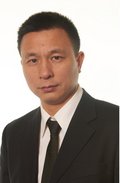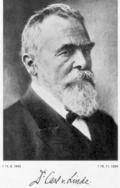
1868
- Founding of a technical university as an independent institute of higher learning and called Königlich Bayerische Politechnische Schule zu München until 1877. The university started its teaching programme with 24 professors, 21 lecturers and assistants and about 450 students.
- Carl von Linde (1842 - 1934) was appointed associate professor to the chair of Theoretical Machine Design.
1872
- Appointment of Carl von Linde as full tenured professor.
1875
- Carl von Linde was also appointed director of the Laboratory for Theoretical Machine Design and which was built according to his specifications and was the first of its kind in Germany. This laboratory was also used for various aspects of fundamental research with the aim of improving the computation data base, and indeed the first experiments in the evaluation of the properties of superheated steam were conducted there. Linde was the first to incorporate the theory of refrigerating machines and refrigeration technology into the teaching schedule. During the following years this new refrigeration technology became so successful that their industrial development took up an increasing amount of his time. Rudolf Diesel was one of his students in the ensuing years.
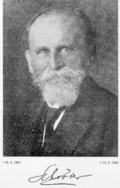
1879
- Carl von Linde asked to be relieved of his teaching duties and moved to Wiesbaden where he became a director of the Linde Ice Machine Company (Gesellschaft für Lindes Eismaschinen AG).
- Appointment of Moritz Schröter (1851 - 1925) as associate professor to the chair of Theoretical Machine Design and as director of the laboratory of the same name. Moritz Schröter was able to make full use of the research laboratory established by Carl von Linde. Many experiments prepared and carried out on large machinery boosted the technical development of these. And so, for example, in 1897 experiments were started on diesel engines, leading on to their successful technical development.
1886
- Appointment of Moritz Schröter as full tenured professor.
1902
- Carl von Linde returned to the university as an extracurricular professor for applied thermodynamics and lectured until 1910.
- Due to the initiative of Carl von Linde, the Laboratory for Technical Physics was founded. O. Knoblauch was appointed director and worked alongside Linde. Various excellent experts in the field of engineering thermodynamics were educated at this institute, among them W. Nußelt and E. Schmidt who also later became professors here.
1908
- Moritz Schröter was appointed rector of the Polytechnic University which he remained until 1911.
1912
- Moritz Schröter and his assistant A. Loschge managed the newly built laboratory, renamed as Laboratory for Heat Engines and which now included a power plant providing heat and light. Today the combined heat and power station is located where the laboratory once stood. 1916, after the completion of the Thiersch building, the institute was relocated to the new location in Gabelsbergerstraße.
1924
- Retirement of Moritz Schröter after 45 years as university lecturer and professor.
Moritz Schröter and his assistant A. Loschge managed the newly built laboratory, renamed as Laboratory for Heat Engines and which now included a power plant providing heat and light. Today the combined heat and power station is located where the laboratory once stood. 1916, after the completion of the Thiersch building, the institute was relocated to the new location in Gabelsbergerstraße.
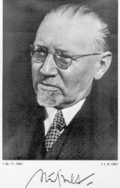
1925
- Appointment of Wilhelm Nußelt (1882 - 1957) as full tenured professor to the chair of Theoretical Machine Design and as director of the Laboratory for Heat Engines (together with A. Loschge). The experimental constructions for almost all of the doctoral theses guided by Nußelt were set up in the newly acquired compressor hall in the basement of the Thiersch building.
- Wilhelm Nußelt’s mission in life was the research of convective heat transfer. Here special attention should be paid to the publication "The Elementary Law of Heat Convection" (1915) which has become famous over the years. The fundamentally new description of heat transfer problems presented in it established the similarity theory of heat convection.
1951
- Retirement of Wilhelm Nußelt.
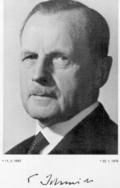
1952
- Ernst Schmidt (1892 - 1975) was appointed to the chair of Theoretical Machine Design and, together with A. Loschge and later on R. Stroehlen, as director of the Laboratory for Heat Engines, Refrigeration, Heating and Ventilation, as the laboratory was now called. Ernst Schmidt was especially active in the field of heat conduction and mass transfer. Here, he did research on the optimisation of fins as well as investigating convection (Schmidt number). After years of doing research on steam properties he published the first international steam table.
1956
- Ernst Schmidt was elected rector of the Polytechnic University which he remained until 1958. After the institute had been expanded the chair was renamed chair of Technical Thermodynamics.
1960
- Retirement of Ernst Schmidt.
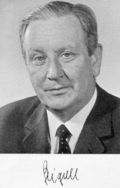
1961
- Appointment of Ulrich Grigull as full tenured professor to the chair of the Institute of Technical Thermodynamics as well as director of the research institute of the same name. The latter only had a few remaining rooms for the Laboratory for Heat Engines, Cooling Technology, Heating and Ventilation. The largest part of these had been transferred to the Laboratory for Thermal Engineering. In exchange, additional rooms in the basement and on the ground floor of the Thiersch building in Gabelsbergerstrasse were acquired after they had undergone considerable reconstruction from 1964 to 1966.
- Ulrich Grigull continued traditional and new research projects whereby he laid particular emphasis on the combination of experimentation and theory. For example on the properties of water and steam as well as their thermophysical properites, but he also extended his research on heat and mass transfer to optical methods using shadowgraph- and Schlieren methods as well as interferometry. One of Ulrich Grigull’s major achievements was the standard textbook in German on heat transfer (Gröber/Erk/Grigull) which he co-authored.
1969
- The institute was renamed to Institute A for Thermodynamics after the establishment of a second thermodynamics institute (Lehrstuhl B für Thermodynamik), later followed by a third thermodynamics institute (Lehrstuhl C für Thermodynamik). More than 30 years later the Institute A for Thermodynamics resumed its previous name Institute for Thermodynamics after the retirement of the chairs of the other two thermodynamics institutes.
1972
- Election of Ulrich Grigull as rector of the Polytechnic University which was renamed to become the Technical University of Munich (Technische Universität München) in 1970.
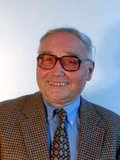
1975
- Election of Ulrich Grigull as 1st president of the Technical University Munich which he remained until 1980.
- J. Straub was appointed provisional director of the chair A in Thermodynamics which he remained until 1981.
- The new university law required that the Institute A for Thermodynamics be integrated into the Institute for Thermodynamics and Fluid Mechanics, Hydraulics and Energetics.
1980
- Retirement of Ulrich Grigull.
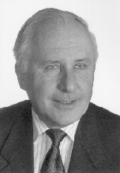
1981
- Appointment of Franz Mayinger as full tenured professor to the Institute A for Thermodynamics within the framework of the larger institution mentioned above. During the following years, additional office and laboratory space were acquired from the former physics department at Luisenstraße 37a.
- Professor Mayinger initiated the first research in the field of multi-phase-flow. He encouraged combustion research and continued the examination of heat convection. In the institute he also implemented the use of new optical measurement techniques such as holographic interferometry and laser induced fluorescence.
1997
- Relocation of the department of mechanical engineering to the newly erected building on the research campus in Garching, north of Munich (ref. Area Map of Garching).
- Appointment of Thomas Sattelmayer as professor to the Institute for Thermodynamics in parallel to Franz Mayinger.
1998
- Retirement of Johannes Straub.
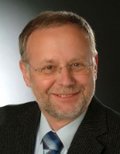
1999
- Retirement of Franz Mayinger.
- Thomas Sattelmayer becomes Chair of the Institute for Thermodynamics.
-
Research in Thermofluiddynamics with special focus on Power Systems, Reliability & Safety, Mobility and Water. In combustion, research includes thermoacoustics instabilities, turbulent flame noise, flame propagation, self ignition and engine knock, turbulent mixing, pollutant reduction, supersonic combustion and transition from deflagration to detonation. Research projects in two-phase flow and heat transfer cover energy systems, atomization, multiphase flows, boiling and catalytic exhaust gas treatment.
-
Longtime involvement with the International Gas Turbine Institute IGTI of the American Society of Mechanical Engineers ASME.
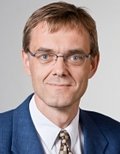
- Appointment of Wolfgang Polifke as associate professor to the Institute for Thermodynamics.
- Appointment of Wolfgang Polifke as head of the Professorship of Thermofluiddynamics.
2021
- Retirement of Thomas Sattelmayer.
